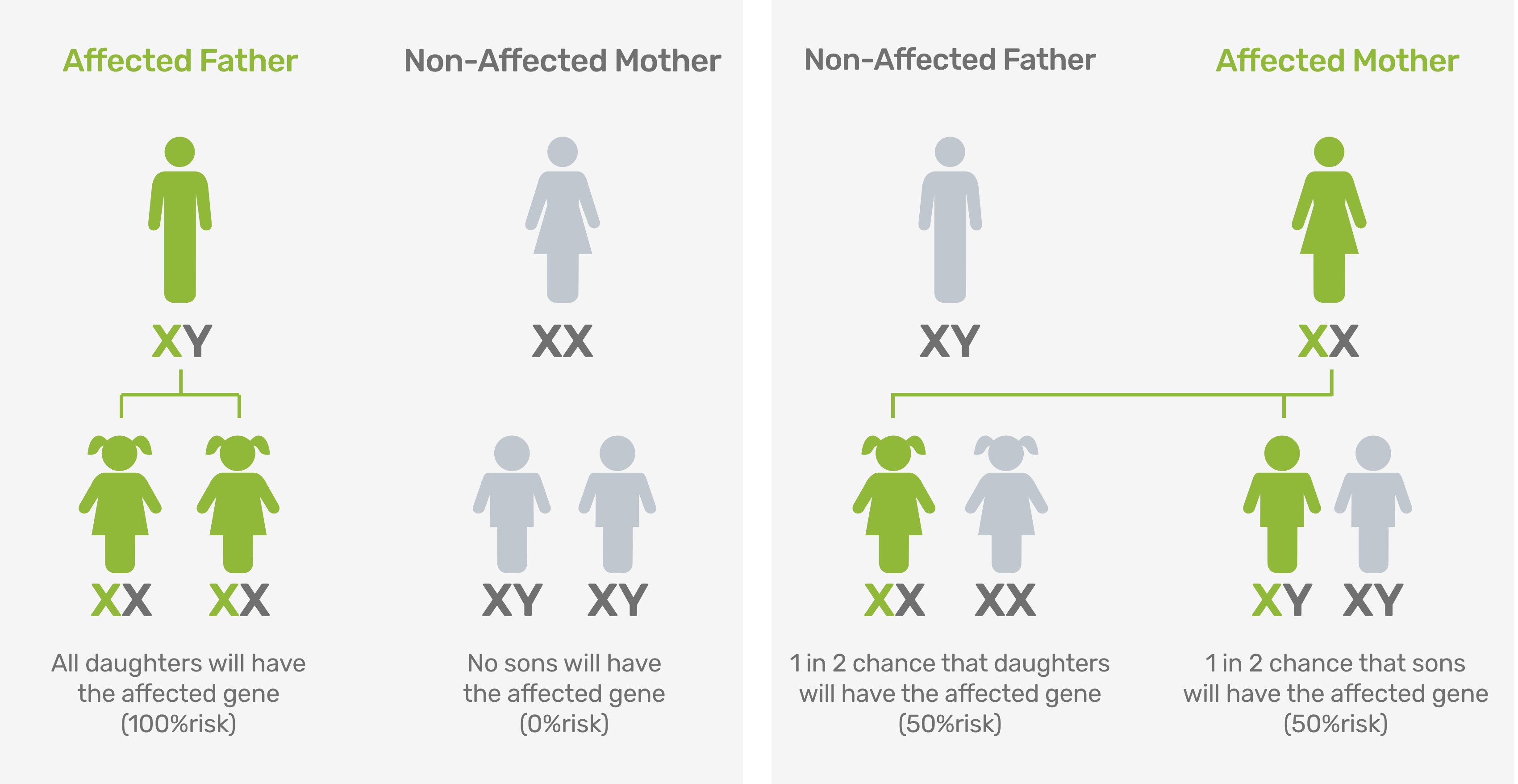Fabry disease inheritance pattern
In Fabry disease, affected mothers have a 50% risk of passing along the altered GLA gene to their children regardless of gender, while affected fathers pass along the defective GLA gene to all of their daughters and to none of their sons.1

A positive family history is a strong indicator for Fabry disease, however de novo or spontaneous variants have been documented.2,3 Consequently, absence of a family history does not rule out a diagnosis of Fabry disease.
Importance of family screening
Once an index case of Fabry disease is diagnosed, presymptomatic family members can be potentially diagnosed at a younger age, allowing for earlier disease management. Family screening and pedigree analysis can be especially helpful for identifying women at risk for Fabry disease.
A Family Tree is one tool that may help patients consider who in their family may be affected.
Family screening can help find patients earlier in their disease course.
A Sanofi Patient Education Liaison can help patients create their Medical Family Tree. The liaison can also help patients better understand the testing, genetic counseling, and disease management options available for them and their families.
Your patients should consider the importance of talking to other family members about Fabry disease
Fabry disease is inherited. Consequently it is common for people who have been diagnosed to have family members who are also affected by the disease. Finding other affected members in a patient's family is important because the long-term consequences for them can be serious. The sooner family members at risk for Fabry disease are identified, the sooner they can explore disease management options.
Patients may feel hesitant to reach out to family members to talk about Fabry disease. There are multiple reasons why individuals may struggle to talk about Fabry with their family members, such as:
- Fear of straining family relationhips
- Fear of blame
- Feeling that the diagnosis is private
- Cultural barriers to sharing health information

For Your Patients:
Consider talking to your patients about the importance of speaking with family members about the disease.
References
1. Germain DP. Orphanet J Rare Dis. 2010;5(30):1-49. 2. Redonnet-Vernhet I, et al. J Med Genet. 1996;33(8):682-688. 3. Desnick RJ, et al. In: The Online Metabolic and Molecular Bases of Inherited Diseases. New York, NY: McGraw Hill; 2014:1-64.



 Men have a 50% chance of inheriting Fabry disease from an affected mother, and will never inherit the gene from an affected father
Men have a 50% chance of inheriting Fabry disease from an affected mother, and will never inherit the gene from an affected father